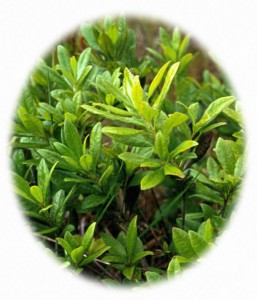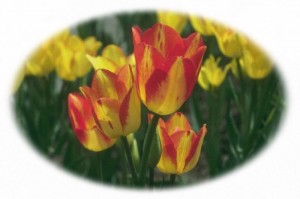 Ornamental, nursery, and greenhouse crops include four major segments: green and foliage plant production, seasonal color and bedding plants, perennial and color foliage, shrubs and woody ornamentals (including Tyler roses), plus sod and tree segments. The following data were obtained from the 1997 USDA Census of Agriculture. Table 22 shows segments, operators and gross sales in Texas. Brief notes are provided on several segments.
Ornamental, nursery, and greenhouse crops include four major segments: green and foliage plant production, seasonal color and bedding plants, perennial and color foliage, shrubs and woody ornamentals (including Tyler roses), plus sod and tree segments. The following data were obtained from the 1997 USDA Census of Agriculture. Table 22 shows segments, operators and gross sales in Texas. Brief notes are provided on several segments.
Nursery plant production. Texas ranks third (behind CA and  FL) with 10% of U.S. production. Two hundred growers operate nearly 200 million square feet of production.
FL) with 10% of U.S. production. Two hundred growers operate nearly 200 million square feet of production.
Vegetable transplants. Mostly peppers and tomatoes are produced in greenhouses, shade, or slat houses by more than 200 operators. GH tomatoes and herbs are produced by 52 operators.
Potted plant and greenery production. Texas has over 300 growers operating 28 million square feet of greenhouse and 8 million square feet under shade or temporary seasonal cover.
 Cut flowers and bulb production. USDA statistics show 49 operators harvested flowers from 212 acres, with gross sales of $4.16 million in 1997. Also see Table 20. Most production in East Texas and areas close to metro centers.
Cut flowers and bulb production. USDA statistics show 49 operators harvested flowers from 212 acres, with gross sales of $4.16 million in 1997. Also see Table 20. Most production in East Texas and areas close to metro centers.
In East Texas, production includes bedding and seasonal color plants, hanging baskets and containerized greenery products, and woody landscape plants. One conservative estimate of production and value was 48 acres of production, generating $2.10 per square foot annually, for total gross sales of $4.4 million in East Texas.
Transplants. In East Texas several hundred family operations produce vegetable transplants, mostly for local seasonal use and sale to regional nursery and grocery outlets. Some full-time commercial production facilities are also operated in this region due to good soils, abundant water, and proximity to markets.
Lower Rio Grande Valley. The Lower Rio Grande Valley has commercial operations that capitalize on favorable year-round climate and labor to produce containerized
greenery plants (for offices and planting), orchids, and other products. Some production of vegetable and seedling transplants (including replacement citrus stocks).
Upper Gulf Coast and Winter Garden areas. Major production of containerized woody landscape plants, generally wholesaled to retail nurseries and the “big box stores”. Generally produced under contract and may include 100 or more
different species, growing in 1- to 30-gallon containers placed on plastic sheeting or gravel, covering 100 acres or more. Irrigation runoff water is captured and recycled on the site.
 Mushrooms. Texas is one of the top five producers in the nation. One of the three strains of mushroom “buttons” are seeded on sterilized, composted material and grown under sanitation to avoid contamination from other spores. Mushrooms are commercially grown under controlled climatic conditions near Houston, Lubbock, Madisonville, and Waxahachie for retail sales. Production is measured by square feet of production houses. USDA reports sales of $51 million.
Mushrooms. Texas is one of the top five producers in the nation. One of the three strains of mushroom “buttons” are seeded on sterilized, composted material and grown under sanitation to avoid contamination from other spores. Mushrooms are commercially grown under controlled climatic conditions near Houston, Lubbock, Madisonville, and Waxahachie for retail sales. Production is measured by square feet of production houses. USDA reports sales of $51 million.
Greenhouse Food Crops. In Far West Texas, several greenhouse tomato operations (40 to 80 acres each) are well established at Marfa, Fort Davis and other sites to take advantage of year-round sunlight and labor availability. Patterned after glasshouse designs in The Netherlands with Dutch management for domestic sales in U.S. Major white fly outbreaks occur.
| Number of Operations | Total Sales (dollars in millions) | |
|---|---|---|
| Nursery Plants | 213 | 117.1 |
| Annual Bedding & Garden Plants | 236 | 13.2 |
| Potted Flowers | 61 | 59.7 |
| Cut Flowers | 8 | 0.6 |
| Foliage Plants | 41 | 17.4 |
| Propagation Materials | 19 | 11.0 |
| Turfgrass Sod & Plugs | 81 | 44.7 |
| Cultivated Mushrooms | 4 | 51.5 |
| Greenhouse Food Crops | 20 | 5.8 |
| Other | 36 | 20.1 |
| Total | 719 | 341.1 |
